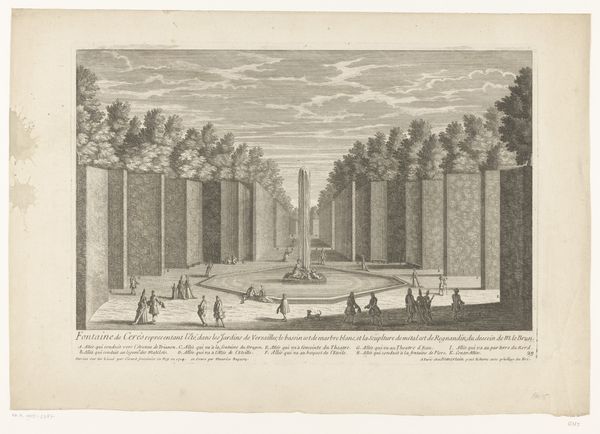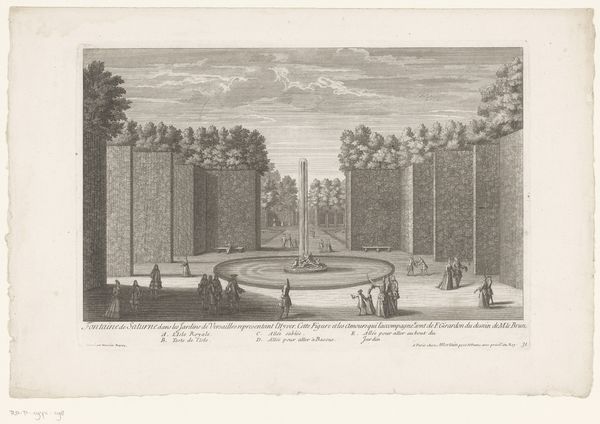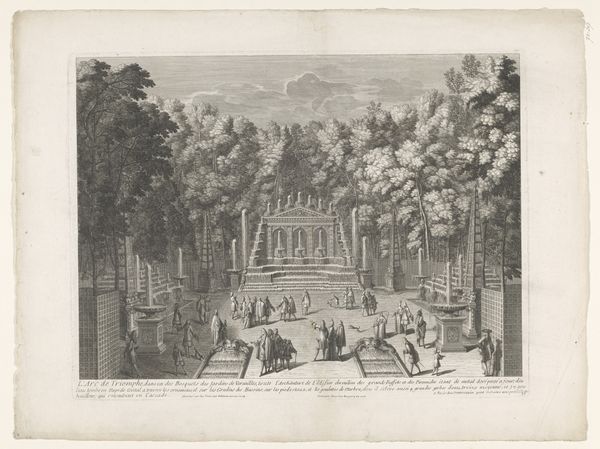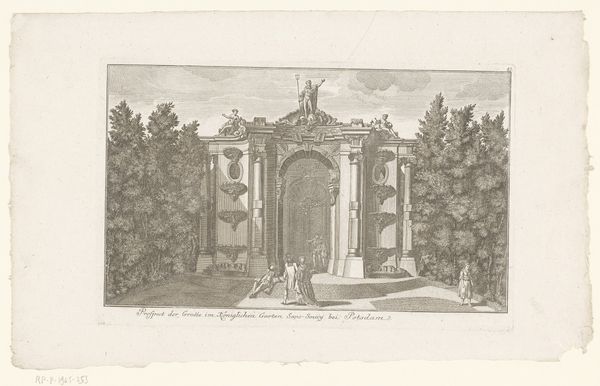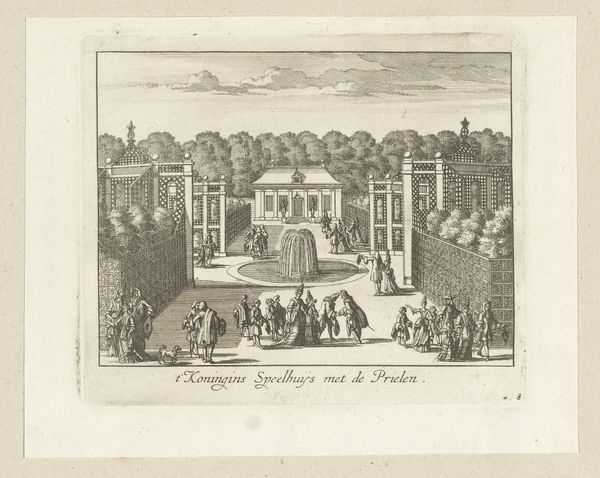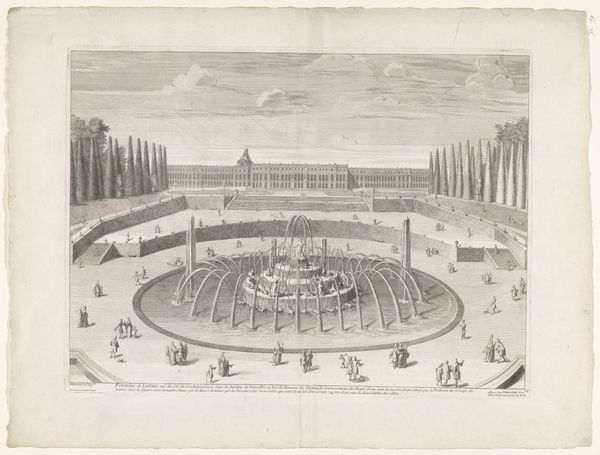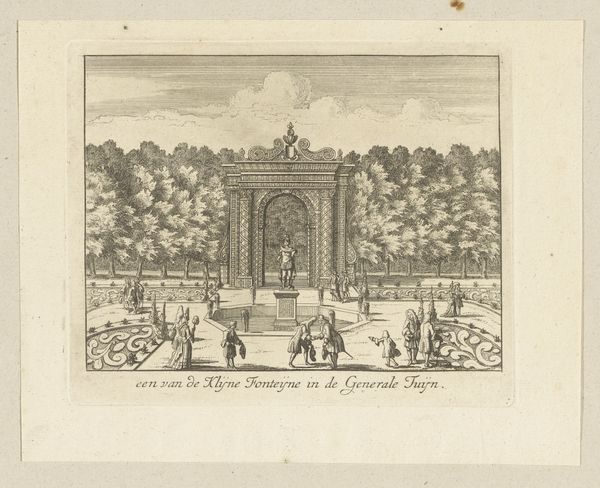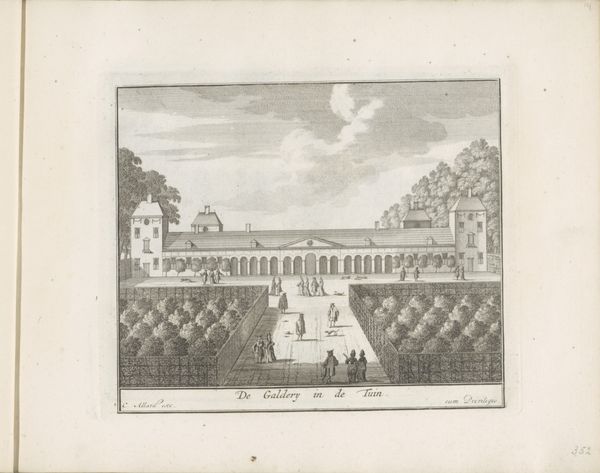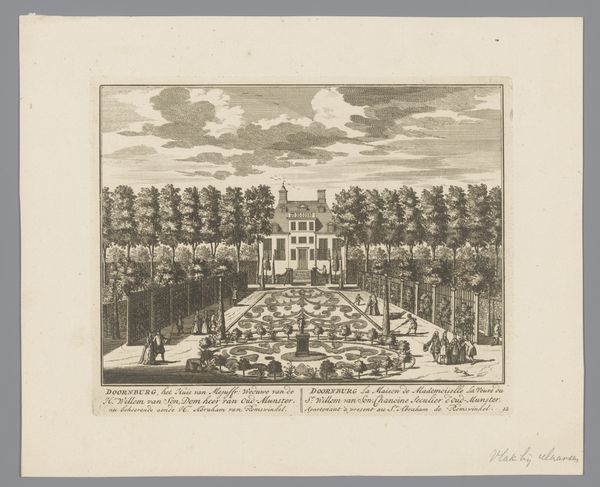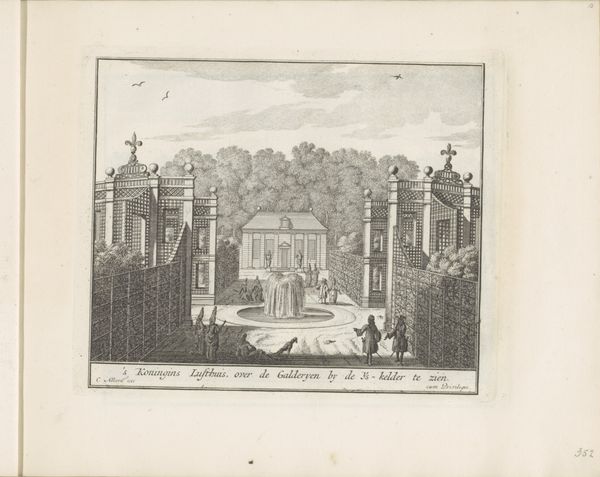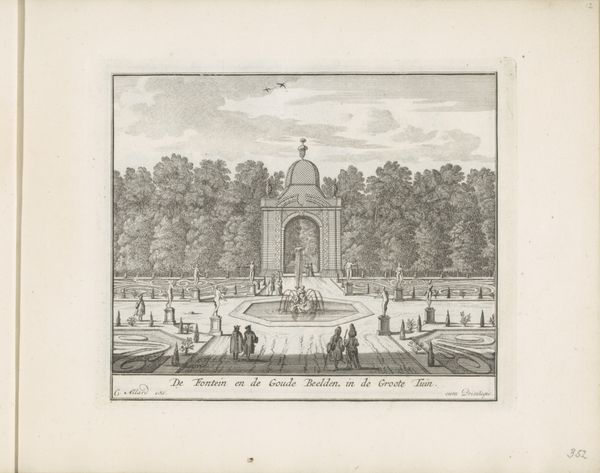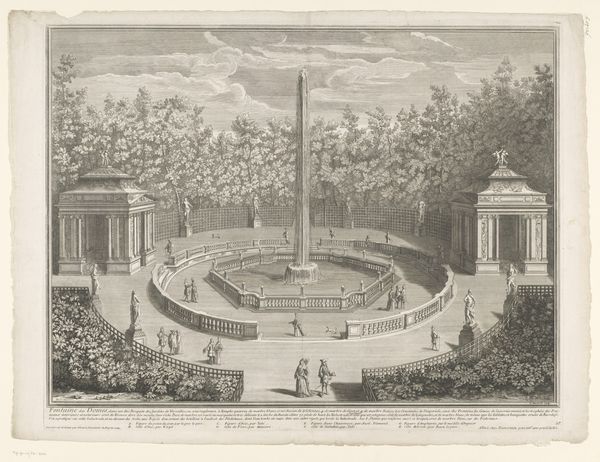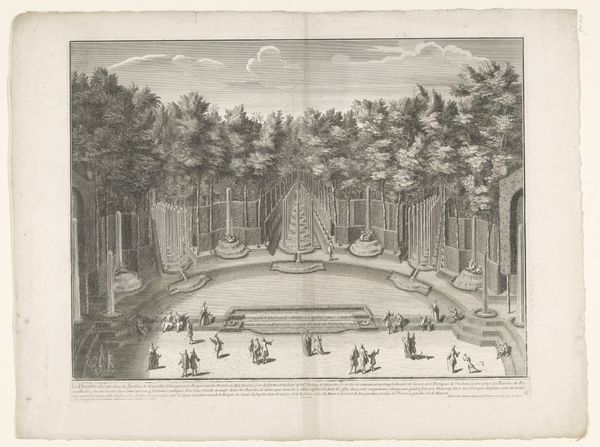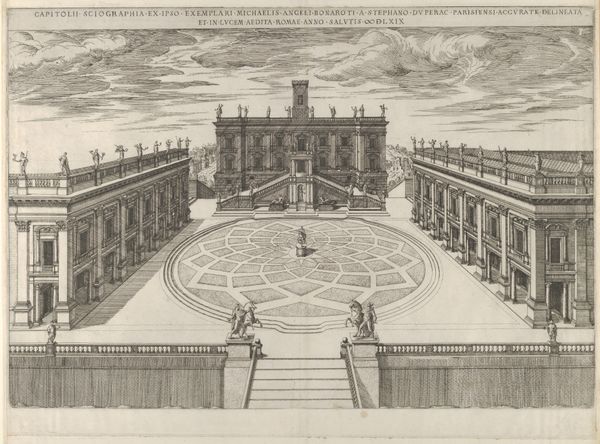
print, etching, engraving
#
statue
#
baroque
# print
#
etching
#
landscape
#
cityscape
#
history-painting
#
engraving
Dimensions: height 279 mm, width 410 mm
Copyright: Rijks Museum: Open Domain
Curator: Here we have "Fontein van Flora te Versailles," dating roughly from 1705 to 1747, attributed to Maurice Baquoy. It's a print—an engraving or etching, to be precise—depicting a cityscape within the famous gardens. What's your first take? Editor: Stately! But also…slightly unsettling? It's all so rigidly ordered. The eye is drawn immediately down this incredibly linear, almost severe, path defined by those imposing walls of foliage. There's something almost panoptical about it, with the figures looking like ants almost. Curator: It’s Baroque classicism, absolutely, intended to showcase human mastery over nature. Versailles, of course, served as a potent symbol of Louis XIV's absolute power, reflecting an era where art and architecture were employed to project political strength and social control. Note how even the people are arranged like props! Editor: Precisely! That’s the disturbing bit. It's like a stage set where the figures are merely players. They are stripped of agency and become just another element to showcase an almost autocratic vision of space, and power relationships made visual. And "Flora"—a god of fertility!—at the heart of all this order. Ironies abound, no? Curator: Absolutely. Versailles became the model for courts across Europe precisely because of its ability to visually communicate dominance and order. Baquoy's print disseminates that image further, embedding it in the visual culture of the period. The medium allows for wider distribution to elites beyond the immediate court circle. Editor: Which raises a critical question: what impact does this controlled, idealized vision have on those who could never access it? Think about the stark contrast to the living conditions of most Parisians, for instance, or indeed all across France, at the time, and who, importantly, are now denied any access even to such beautified depictions. The power dynamic extends right into the image itself, shaping who and what can be seen, and at what cost. Curator: An important point to consider. It highlights the inherent selectivity and the power of representation in reinforcing existing hierarchies, something we grapple with constantly even today. It offers a potent lens through which to analyze how art shapes perception. Editor: Well, reflecting on this, it underscores how essential it is to constantly examine art's capacity to both mirror and shape society, reminding us that behind even the most aesthetically pleasing imagery there exist deeply embedded systems of power.
Comments
No comments
Be the first to comment and join the conversation on the ultimate creative platform.
